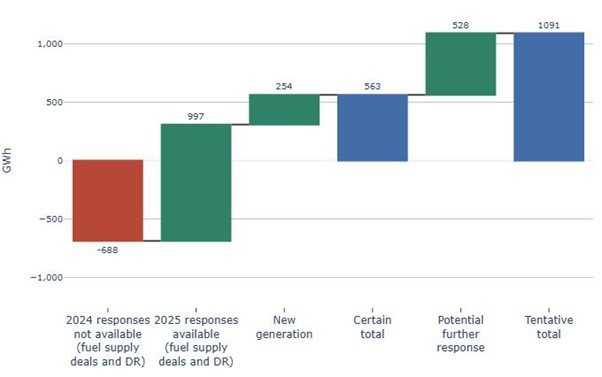Eye on electricity
What are contingent contracts and how do they help our power system?
- Distribution
- Generation
It’s crucial that there’s always enough electricity being generated to meet New Zealand’s electricity needs – even when the hydro lakes are running consistently low or if there is major equipment failure.
To help ensure the lights stay on, some power generators have ‘contingent contracts’ as a back-up. These contracts give power companies the right to access energy when they want to, at a negotiated price.
Contingent contracts can be made with other power generators to provide more electricity, or with coal and gas suppliers to provide extra fuel. They can also be deals with large electricity users, such as the Tiwai Point aluminium smelter, which can reduce its electricity use when supply is low.
How will contingent contracts help the electricity system this winter?
The total amount of energy available under these contingent contracts this winter is similar to winter 2024. However, new electricity generation has come online since last winter, which puts more electricity in the tank.
For example, two geothermal power plants near Taupō – Tauhara and Te Huka 3 – are now running at full capacity. The West Wind farm near Wellington has also improved capacity, and three new solar farms (Lauriston in Canterbury, Te Herenga o Te Rā in Bay of Plenty and Te Puna Mauri ō Omaru in Northland) have started generating electricity since last winter. This means there are 254 gigawatt hours (GWh) more power from new generation available compared to last year. To put this in simple terms, that’s enough to power around 120,000 households for the winter.
When combined, the contingent contracts currently in place and new generation capacity mean our system has about 563GWh more energy available than last year. This is roughly the same generating capacity of Lake Taupō when it is full. If we add to that potential further contingent contracts, the amount of energy in reserve nearly doubles – with more than 1,000GWh of available capacity.
The chart below shows how much energy the country has through contingent contracts above the level used last year.

How contingent contracts helped avert a potential shortage in 2024
During winter 2024, two deals between high-energy users to reduce their demand helped the power system navigate through a fuel shortage – when our hydro lakes were very low, gas supplies declined and wholesale electricity prices shot up as a result.
In the South Island, an agreement at the Tiwai Point aluminium smelter was negotiated with its electricity supplier Meridian. This agreement was made before winter, and before New Zealand experienced a fuel supply shortage in August. As a result, this significantly helped reduce overall electricity demand when it was needed and freed up electricity for the grid.
During this time, Contact Energy also made a deal with Methanex in Taranaki. As part of this deal, Methanex reduced the amount of gas it uses for manufacturing, making more gas available to generate electricity. This happened in the middle of August and immediately eased the tight gas supply for electricity and lowered wholesale electricity prices.
The key difference between these two deals is timing. The Tiwai deal was in place before the fuel shortage (and winter), and the Methanex deal was negotiated during the shortage when supply was already tight. Both deals were helpful in keeping the lights on when electricity supply was low. The effect on the wholesale price after the Methanex deal highlights the importance of having contingent contracts in place early rather than waiting until they are required.
Related News
Electricity Authority proposes reining in high up-front charges to connect to electricity networks
We’re seeking feedback on our proposal to rein in excessively high connection costs, which are a known problem in some parts of the country.
Wholesale prices plummet as the proportion of renewables increases
Wholesale electricity prices dropped dramatically in just two months - from over $280/MWh in late August 2025 to an average of $30/MWh in October 2025, the low…
Proposal to collect and publish energy margin information
We want to collect and publish information on generators’ energy margins, and we want to hear your views about our proposed approach.